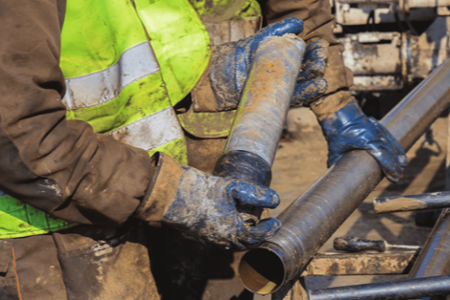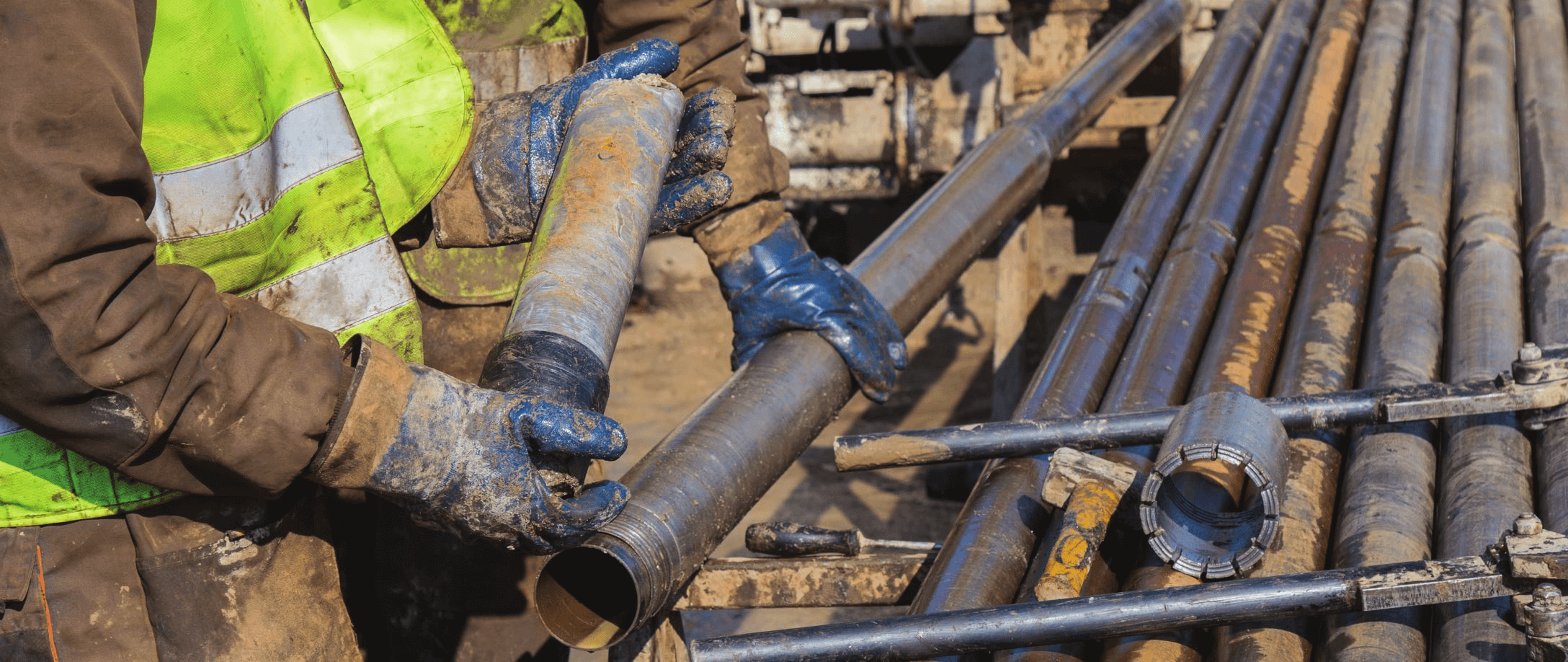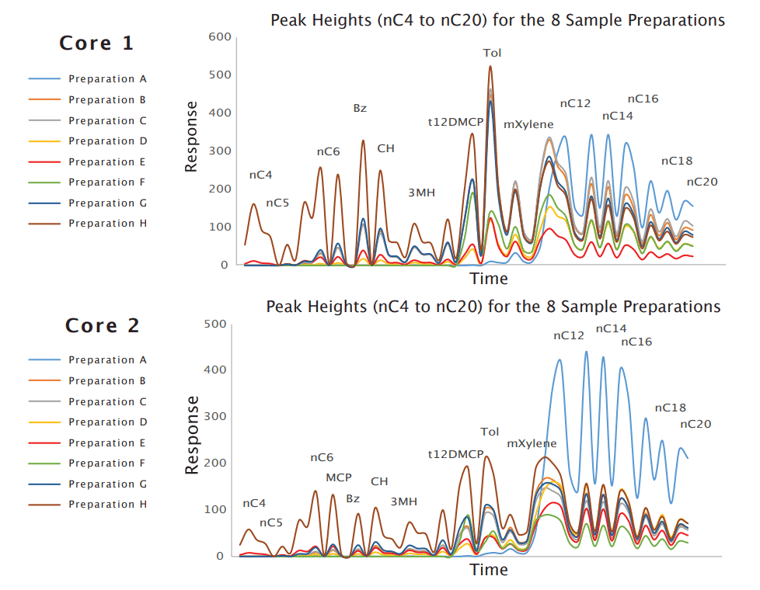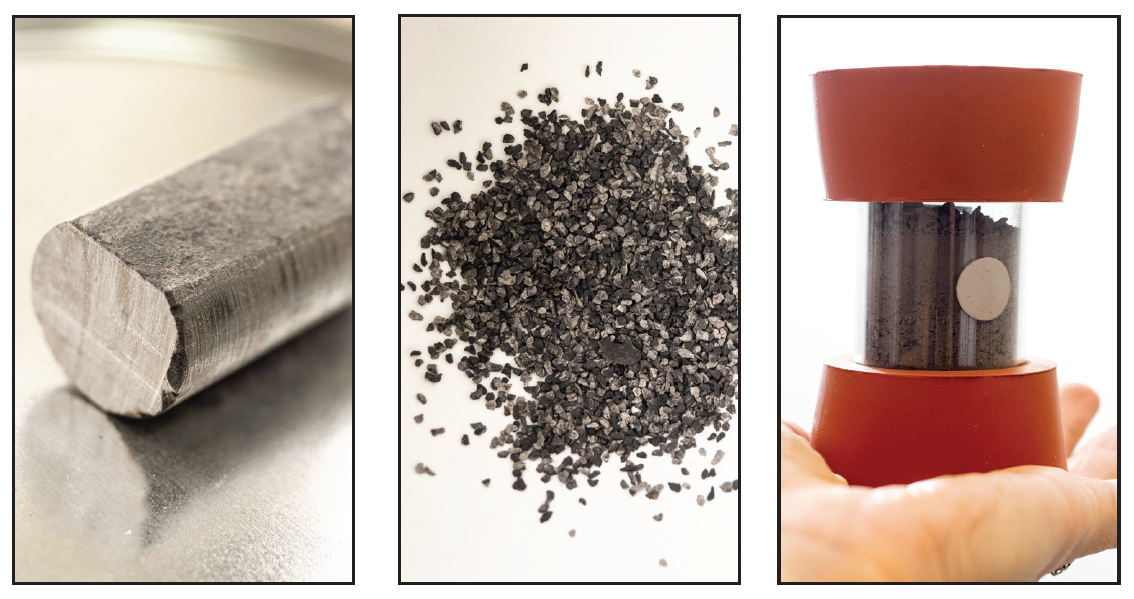Extracting Hydrocarbons from Core - Methods to Maximize Sample Integrity
March 27, 2020 | 5 Minutes Read


Introduction
In this Science Bulletin, we investigate light-end hydrocarbon (LHC) preservation in core samples using various solvent extraction techniques. Traditional solvent extraction methods are overly exhaustive and destructive towards LHCs making any comparison to the fingerprint of a produced oil invalid. However, the success of any method of extraction is only valid when good core sampling and handling procedures have been followed. Furthermore, tight lithologies will understandably retain better LHC compounds than more permeable lithologies, regardless of the slected sample handling and/or extraction protocol. Therefore, no matter what laboratory process is followed, some core material is simply geologically averse to LHC presevration.
Lab procedures for core extraction, whether utilizing solvent, thermal processes or supercritical gasses do not mimic either the conditions or timescales of geologic processes for oil expulsion. Therefore, it should not be expected for core extracts and produced oils to perfectly correlate with one another, even in ideal conditions. However, they do share common characteristics, making correlation work possible and LHC preservation sought after in core extracts.
The use of hydrocarbon core extracts in reservoir geochemistry studies for correlation is well established. However, methods to maximize sample integrity and the data available for geochemical assessments are of increasing importance as interest in unconventional reservoir geochemistry and tying production to source rocks has increased.
In unconventional plays with a higher thermal maturity, biomarkers are largely absent, shifting the focus to LHC compounds and highlighting the need to maximize integrity of peak ratios for lower molecular weight compounds. This Science Bulletin demonstrates which extraction method most successfully preserves the LHC character of samples and is therefore best suited for core extract analysis.
Solvent Extraction Methods
This study tested eight different solvent extraction methods (A to H below) on two frozen core samples from the Delaware Basin along with a comparison to gas chromatography generated via thermal extraction (not shown). The latter method resulted in poor LHC retention and will not be discussed further in this bulletin. Extracted material from each solvent method was analyzed using the same High Resolution GC (HRGC) setup and parameters to ensure direct method comparability.
The eight methods included three different solvents: Dichloromethane DCM (A), Carbon disulfide CS 2 (B-E, G, H) and Cyclohexane C6H12 (F) with some methods grinding the frozen core under solvent (B-C, F), sealed in closed vials (D-E & G-H) or extracted using a Dionex ASE 350 (A). The difference between B & C is that Preparation B is concentrated down at room temperature and Preparation C is concentrated using a cold plate. The closed vial methods were extracted from either powders [60 mesh sieve] (D-E) or chips [10-20 mesh sieve] (G-H) and sealed in a vial with CS 2 solvent. Two of the closed vial samples were concentrated on a cold plate (D, G) while the other two samples were analyzed with no concentration [NC] (E, H).
%20Traces.png?width=1142&name=High%20Resolution%20Gas%20Chromatography%20(HRGC)%20Traces.png)
Maximizing Sample Integrity
The eight extraction methods assessed (Preparations A to H) showed significant variability in LHC preservation. Unsurprisingly, given that it is the only method to evaporate to dryness, Preparation A (Quantitative Extraction) preserved almost no peaks lighter than nC-12. Preparation F (Cold Cyclohexane Extraction) was the next “worst” method with some peak preservation, down to nC-7, but most of the LHC peaks are still missing.
The closed vial samples extracted from powders (Preparations D & E) along with standard CS 2 extraction (Preparation B) were slightly better than Cyclohexane solvent (Preparation F) with some peaks evident down to nC-6. The cold CS 2 extraction (Preparation C) and closed vial sample extracted from chips and concentrated (Preparation G) were a significant improvement on all of the previously discussed methods.
For this experiment, by far the best extraction method for retaining LHC peaks (down to nC-4) is closed vial samples, extracted from chips, and not concentrated (Preparation H). This method is a vast improvement relative to the other methods assessed.
Maximizing sample integrity is not only crucial when consideringreliability of gasoline range compounds but also has an effect on heavier compounds. As evident from the bivariate cross-plots (shown on the next page) differing LHC preservation in the core samples results in a range of values for commonly utilized GC ratios.

Significance for Reservoir Geochemistry Program Design & Application

The preservation of LHC compounds is problematic in both produced fluids and extracted core fluids. Tight rocks, as mentioned, will generally preserve these compounds better than more permeable lithologies. But, some loss, even as core samples are being brought to atmospheric conditions is unavoidable.
Light-end preservation can be crucial when trying to maximize the value of the analytical program of high thermal maturity samples. This preservation is equally important in lower maturity samples particularly where the analytical program relies almost exclusively on HRGC results. This importance, across all sample maturities arises because loss of light-end peaks changes the character of the whole chromatography. It does not change the ratios by much (as shown in the plots above) but is enough to effect detailed allocation and production monitoring. It cannot be assumed that light-end loss will have no impact on compounds peaks and ratios >nC-15 (including Pr/Ph).
One method of reducing this reliance and associated error is to ensure your project is designed to incorporate a robust analytical suite of geochemical analytical methods (bulk, isotopes, traditional biomarkers (GC-MS), non-traditional biomarkers (GC-MS/MS QQQ). Combining these analyses with a solvent extraction and HRGC method, designed to maximize sample integrity, ensures the greatest reliability and confidence in any reservoir geochemistry program.
Conclusions
Maximizing sample integrity should be a priority in any geochemical study in which core extract fluids will play a roll. The best method to maximize LHC retention of hydrocarbons is closed vial CS 2 solvent extraction on chips with no concentration. Assuming good sampling and handling procedures as well as a favourable lithology, this method ensures the best preservation in the extracted fluid.


